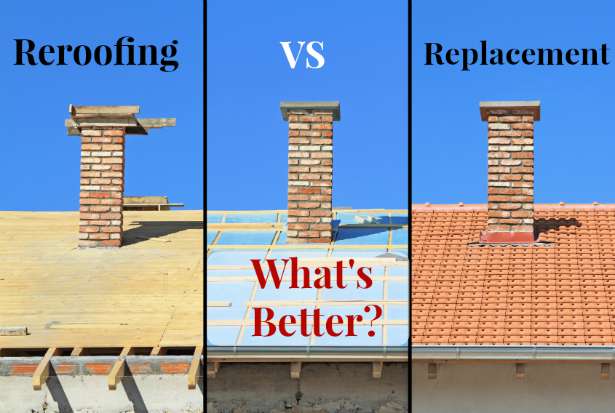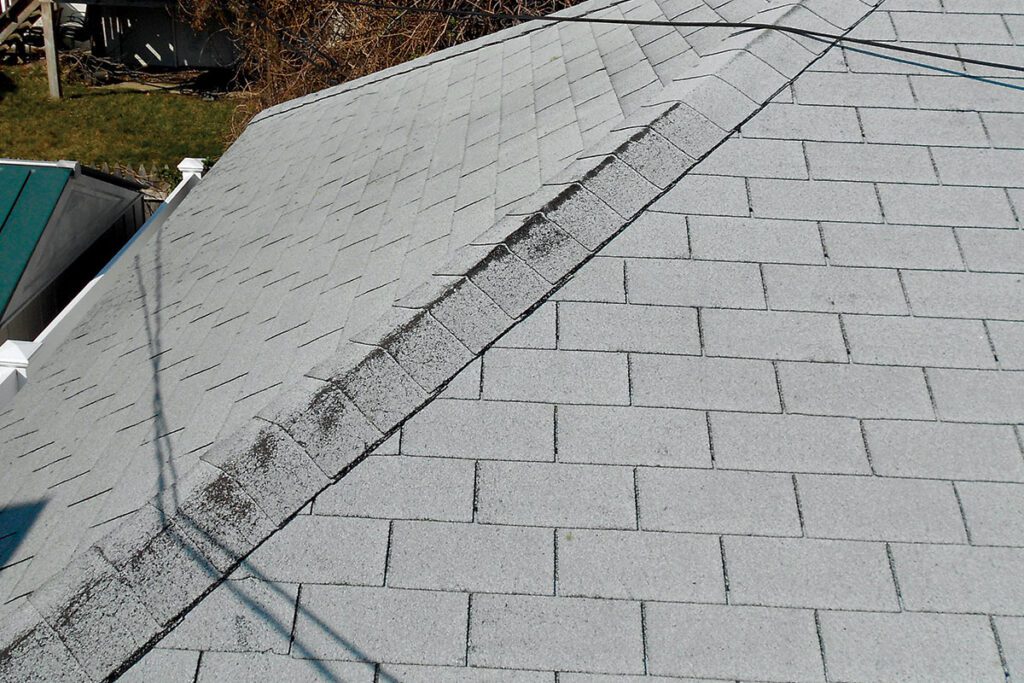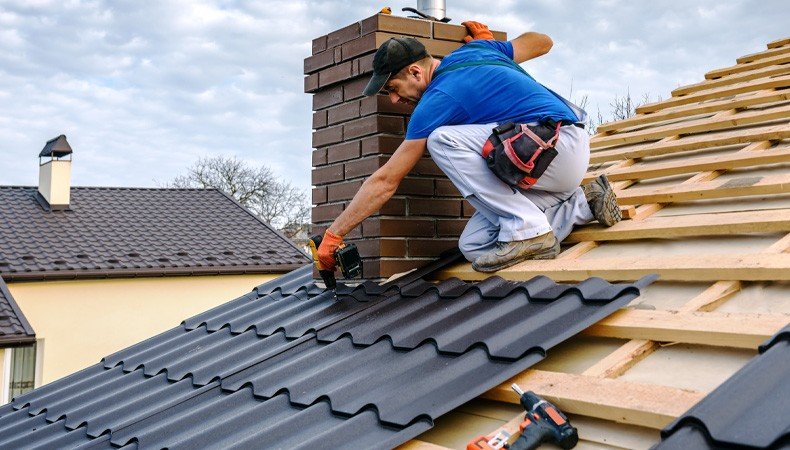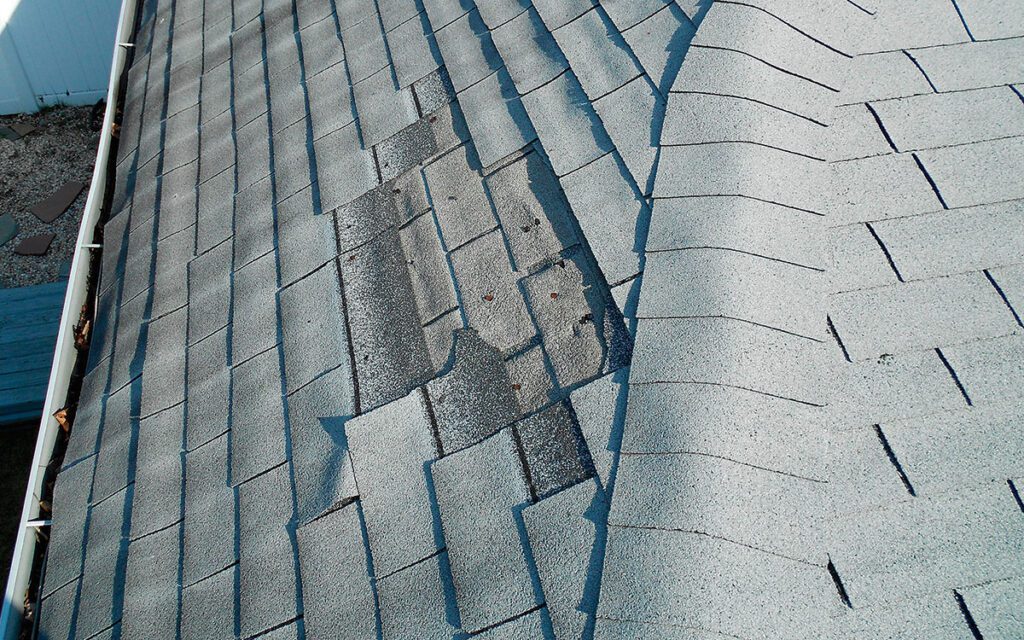Have you ever wondered how often you should reroof your home? It’s a question that lingers in the back of your mind as a homeowner, but one that often goes unanswered. That’s why we’re here to shed some light on the topic. Whether it’s due to age, weather damage, or simply wanting to refresh the look of your house, reroofing is a task that eventually becomes necessary. In this article, we’ll explore the factors that determine how often you should reroof, providing you with the guidance you need to keep your home safe and secure. So, grab a cup of coffee and let’s dive into the world of roof maintenance together!
Factors Affecting Roof Lifespan
Climate and Weather Conditions
The climate and weather conditions in your area play a significant role in determining the lifespan of your roof. If you live in an area with extreme temperatures, heavy rain, snow, or high winds, your roof will experience more wear and tear over time. Constant exposure to harsh weather conditions can weaken the roof materials and result in a shorter lifespan.
Roof Material
The type of material used for your roof also affects its lifespan. Different materials have different durability and longevity. For example, asphalt shingles are a common choice for residential roofs due to their affordability, but they typically have a shorter lifespan compared to materials like metal, wood, or slate. Considering the pros and cons of each type of roofing material can help you determine the best choice for your home and desired lifespan.
Installation Quality
The quality of the installation is crucial in determining how long your roof will last. Even the best roofing materials can fail prematurely if not installed correctly. Hiring a reputable roofing contractor who has experience in proper installation techniques is essential to ensure the longevity of your roof. Proper installation includes ensuring proper ventilation, using the right number of nails, and following manufacturer’s guidelines.
Maintenance
Regular maintenance is vital for the lifespan of your roof. Neglecting maintenance tasks can lead to premature roof failure. It is recommended to have your roof inspected annually and after severe weather events. Regular inspections allow you to identify and address any issues before they escalate into major problems. Additionally, performing routine maintenance tasks such as cleaning gutters, removing debris, and repairing damaged shingles can help extend the lifespan of your roof.
Roof Color
Believe it or not, the color of your roof can affect its lifespan. Dark-colored roofs tend to absorb more heat, which can cause the material to degrade faster over time. On the other hand, lighter-colored roofs reflect more sunlight, reducing heat absorption and potentially extending the roof’s lifespan. Factors such as climate and insulation also come into play, but it’s worth considering choosing a lighter-colored roof if you live in a hot climate.
Signs It’s Time to Reroof
Roof Age
The age of your roof is an obvious indicator of whether it’s time for a reroof. Different roofing materials have different lifespans, so knowing when your roof was installed can give you a good idea of its remaining lifespan. As a general guideline, asphalt shingles typically last around 20-25 years, while metal roofs can last 40-70 years.
Curling or Buckling Shingles
Curling or buckling shingles are signs of a deteriorating roof. Shingles can curl or buckle due to age, poor installation, or excessive heat exposure. When shingles start to curl or buckle, they can no longer provide proper protection against the elements and may be prone to damage or leaks. If you notice curling or buckling shingles, it’s a clear sign that it’s time to reroof.
Missing Shingles
Missing shingles on your roof indicate that the roof is compromised and may no longer be able to effectively shield your home from the elements. Shingles can go missing due to severe weather, improper installation, or simple wear and tear. Regardless of the cause, missing shingles are a surefire sign that you need to replace your roof.
Leaks and Water Damage
Water is a roof’s worst enemy. If you start to notice water stains on your ceiling or walls, it’s a clear indication of a roof leak. Leaks can be caused by damaged or deteriorated roofing materials, improper flashing, or clogged gutters. Ignoring leaks can lead to further damage to your home’s structure and may require more extensive repairs. Once you’ve identified a roof leak, it’s essential to address it promptly and consider reroofing if necessary.
Moss or Algae Growth
The presence of moss or algae on your roof can indicate moisture retention, which can lead to further roof damage. Moss and algae tend to grow in shaded or damp areas, especially in regions with high humidity. While the growth itself may not directly cause roof failure, it can trap moisture and accelerate the deterioration of roofing materials. If you notice significant moss or algae growth on your roof, it’s advisable to consider reroofing to prevent further damage.

Average Roof Lifespans by Material
Asphalt Shingles
Asphalt shingles are one of the most common roofing materials for residential properties due to their affordability and easy installation. On average, asphalt shingles have a lifespan of around 20-25 years. However, the lifespan can vary depending on factors such as climate, maintenance, and quality of installation.
Metal Roofing
Metal roofs have gained popularity in recent years due to their durability and longevity. Metal roofs can last anywhere between 40-70 years, making them a long-lasting option. Metal roofs also offer excellent resistance against severe weather conditions such as high winds, hail, and fire.
Wood Shingles
Wood shingles, often made from cedar or redwood, offer a natural and aesthetically pleasing look for roofs. With proper maintenance, wood shingles can last around 30-40 years. However, wood shingles require more regular maintenance and care to prevent issues such as rot or insect damage.
Slate and Tile
Slate and tile roofs are known for their durability and longevity. With proper installation, these materials can last over 50 years and sometimes even up to a century. Slate and tile roofs are highly resistant to fire, rot, and pests, making them an excellent choice for homeowners seeking a long-lasting and low-maintenance option.
Flat Roofs
Flat roofs, commonly found in commercial buildings or modern residential designs, have varying lifespans depending on the material used. Built-up roofs (BUR) and modified bitumen roofs typically have a lifespan of around 15-25 years. However, single-ply membranes like EPDM or TPO can last up to 30-40 years with proper maintenance.
Rubber Roofs
Rubber roofs, also known as ethylene propylene diene monomer (EPDM) roofs, are popular for their affordability and ease of installation. Rubber roofs can last around 20-25 years with proper maintenance. They are resistant to sunlight, hail, and thermal shock, making them a suitable choice for areas with extreme weather conditions.
Green Roofs
Green roofs, which incorporate vegetation and soil on the roof surface, have gained popularity for their environmental benefits. The lifespan of a green roof varies depending on the underlying waterproofing system and maintenance practices. With proper care, a green roof can last around 30-50 years.
Roofing Maintenance Tips
Regular Inspections
Regular roof inspections are essential to catch any potential issues before they become more significant problems. It is recommended to have your roof professionally inspected at least once a year and after severe weather events. A professional inspector can identify signs of damage, leaks, or any need for repairs.
Cleaning Gutters and Downspouts
Cleaning your gutters and downspouts regularly is crucial for preventing water damage to your roof. Clogged gutters can cause water to overflow onto the roof, leading to moisture buildup and potential leaks. Make sure to remove leaves, debris, and any obstructions from the gutters and downspouts to ensure proper water drainage.
Trimming Overhanging Trees
Overhanging tree branches can pose a risk to your roof, especially during storms or high winds. Falling branches can damage shingles or even puncture the roof. Regularly trim any large or low-hanging branches that could potentially damage your roof and surrounding areas.
Removing Debris
Debris such as leaves, twigs, and dirt can accumulate on your roof over time. It’s important to remove this debris regularly, as it can trap moisture and promote the growth of algae or moss. Using a broom or a leaf blower, gently remove any debris from your roof’s surface.
Repairing Damaged Shingles
If you notice any damaged or missing shingles during your inspections or when cleaning your roof, it’s crucial to address them promptly. Damaged shingles can leave your roof susceptible to leaks and further damage. Replace any damaged or missing shingles, or consider contacting a professional roofer for assistance.

When to Consider Reroofing vs. Roof Repair
Extent of Damage
The extent of the damage to your roof will determine whether a simple repair or a complete reroof is necessary. If the damage is confined to a small area and the rest of the roof is in good condition, a repair may be sufficient. However, if the damage is widespread, extensive, or affecting the structural integrity of the roof, reroofing is likely the more practical solution.
Cost Considerations
Cost is an essential factor to consider when deciding between reroofing and roof repair. In some cases, a repair can be a more cost-effective option, especially if the damage is localized. However, if your roof is nearing the end of its expected lifespan or has significant damage in multiple areas, investing in a reroof may provide better long-term value.
Future Plans for the Property
Consider the future plans you have for your property when deciding between reroofing or roof repair. If you are planning to sell your home in the near future, a reroof may be a wise investment to increase its value and attract potential buyers. On the other hand, if you have long-term plans for the property and are satisfied with the current roof’s condition, a repair may be sufficient.
Energy Efficiency and Insulation
Reroofing presents an opportunity to improve the energy efficiency and insulation of your home. Upgrading to more energy-efficient materials or adding additional insulation during a reroofing project can help reduce energy costs and improve comfort within your home. Consider the potential energy-saving benefits when deciding whether to reroof or repair.
What to Expect During Reroofing
Choosing a Reputable Contractor
Selecting a reputable roofing contractor is crucial to ensure a successful reroofing project. Research local contractors, read reviews, and request quotes from multiple companies. Look for contractors with proper licenses, certifications, and insurance. Hiring a reputable contractor will help ensure the quality and longevity of your new roof.
Permits and Regulations
Depending on your location, you may need to obtain permits and adhere to specific regulations when reroofing your property. Check with your local building department to determine the necessary permits and any zoning or building restrictions you need to comply with. Failing to obtain the required permits can result in fines and potential legal issues.
Removing Old Roofing Material
Before installing new roofing material, the old roof material needs to be removed. This process involves stripping away the existing shingles or other materials down to the roof deck. Removing the old roofing material allows for a thorough inspection of the decking and ensures a clean and smooth surface for the new material.
Inspecting and Repairing Decking
Once the old roofing material is removed, the decking needs to be inspected for any damage or decay. Damaged or rotted decking should be repaired or replaced to ensure a sturdy foundation for the new roof. Taking the time to address any issues with the decking will contribute to the longevity and performance of the new roof.
Installing New Roofing Material
Once the old roof has been removed and the decking is in good condition, the installation of the new roofing material can begin. The new material is installed according to the manufacturer’s instructions and industry best practices. Proper installation techniques, including proper flashing and ventilation, are crucial for the long-term performance and lifespan of the new roof.

DIY vs. Hiring Professionals for Reroofing
Pros and Cons of DIY Reroofing
DIY reroofing may seem like a cost-effective option, but it comes with several considerations. While it can save you money on labor costs, it requires a significant time commitment, physical labor, and specialized knowledge. Reroofing is a complex project that involves working at heights, handling heavy materials, and ensuring proper installation techniques. Without proper experience and equipment, DIY reroofing can lead to costly mistakes and potential safety hazards.
Benefits of Hiring Professional Roofers
Hiring professional roofers for your reroofing project offers several advantages. Professional roofers have the necessary skills, experience, and knowledge to properly install and repair roofs. They are equipped with the right tools and equipment to complete the project efficiently and safely. Additionally, hiring professionals often includes warranties and guarantees on workmanship, ensuring peace of mind and protection against any potential issues.
Safety Considerations
Reroofing can be a dangerous task, especially for those without experience or appropriate safety equipment. Working at heights without proper fall protection is a significant risk. Professional roofers are trained in safety protocols and have the necessary equipment to work safely. For the safety of yourself and others, it is strongly recommended to hire professionals for reroofing projects.
Roof Replacement Costs
Factors Affecting Costs
Several factors influence the overall cost of a roof replacement. These include the size and complexity of the roof, the type of roofing material chosen, the need for any repairs or additional work, the location of the property, and the cost of labor in your area. It’s important to obtain multiple quotes from reputable contractors to compare costs and ensure a fair price.
Average Cost by Roof Material
The cost of a roof replacement can vary depending on the material chosen. Asphalt shingles are generally the most affordable option and can range from $3 to $5 per square foot. Metal roofing tends to be more expensive, ranging from $7 to $12 per square foot. Wood, slate, and tile roofs are on the higher end of the price spectrum, with costs ranging from $15 to $30 per square foot.
Labor Costs vs. Material Costs
When budgeting for a roof replacement, it’s crucial to consider both labor and material costs. Labor costs typically account for a significant portion of the overall expense. The complexity and size of the roof, as well as the time required for installation, influence labor costs. Material costs, on the other hand, depend on the type and quality of the roofing material chosen.
Additional Costs to Consider
In addition to the labor and material costs, there are other expenses to consider when replacing a roof. These can include the cost of permits, debris removal, any necessary repairs to the decking or structural issues, and the cost of additional components such as flashing or ventilation. It’s important to discuss these potential additional costs with your roofing contractor during the planning phase.

Roofing Warranties and Insurance
Manufacturer’s Warranties
Many roofing materials come with manufacturer’s warranties that provide coverage against defects or premature damage. The length and terms of these warranties can vary depending on the manufacturer and type of material. It’s essential to understand the details of the warranty before making a decision on the roofing material. Additionally, be sure to follow the manufacturer’s guidelines for installation and maintenance to ensure the warranty remains valid.
Workmanship Guarantees
Reputable roofing contractors often provide workmanship guarantees on their installation and reroofing projects. A workmanship guarantee ensures that if any issues arise due to improper installation, the contractor will fix the problem at no additional cost to the homeowner. Always inquire about workmanship guarantees when hiring a roofing contractor.
Homeowner’s Insurance
Your homeowner’s insurance policy may provide coverage for roof damage resulting from unforeseen events such as storms, hail, or fire. It’s important to review your policy and understand what is covered and what requirements must be met to file a claim. Regular maintenance and prompt repairs are typically required to maintain coverage, so it’s essential to keep your roof in good condition.
Roof Insurance Coverage
Certain types of roofing, such as wood shakes or slate, may require additional insurance coverage due to their higher replacement costs or increased risk of damage. If you choose these materials for your roof, check with your insurance provider to ensure you have adequate coverage. It is also important to inform your insurance company of any roof replacements or repairs to ensure your coverage remains valid.
Conclusion
Your roof is one of the most important elements of your home, protecting you and your belongings from the elements. Understanding the factors that affect roof lifespan, recognizing signs that it’s time to reroof, and knowing the average lifespans for different roofing materials can help you make informed decisions about maintaining and replacing your roof. Regular maintenance, proper installation, and hiring reputable professionals are key to ensuring the longevity and integrity of your roof. By considering the factors discussed in this article and following the recommended guidelines, you can prolong the lifespan of your roof and enjoy a secure and well-protected home.
